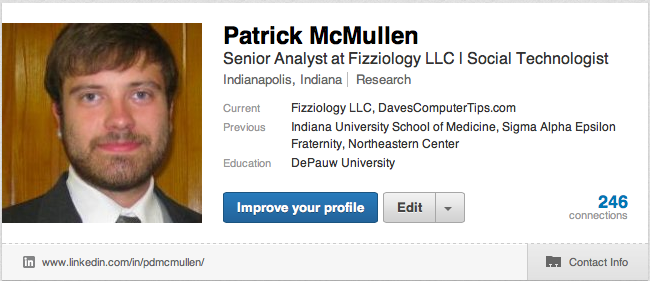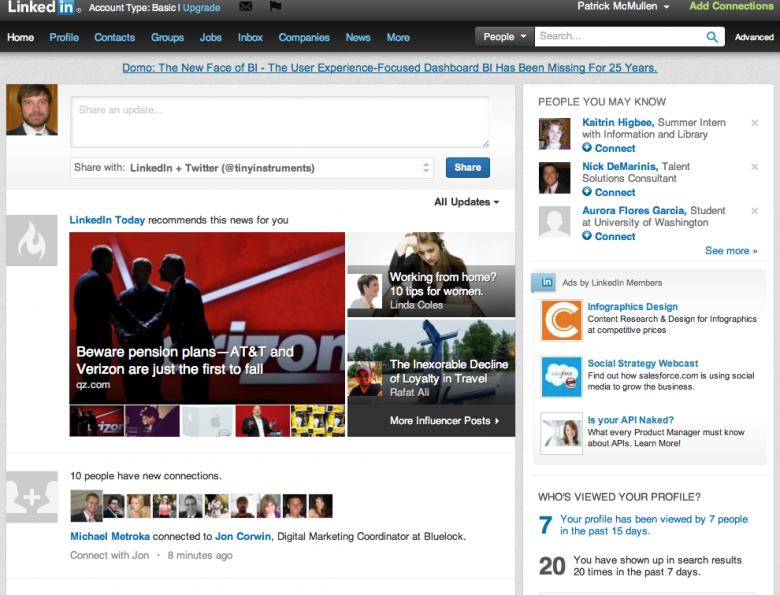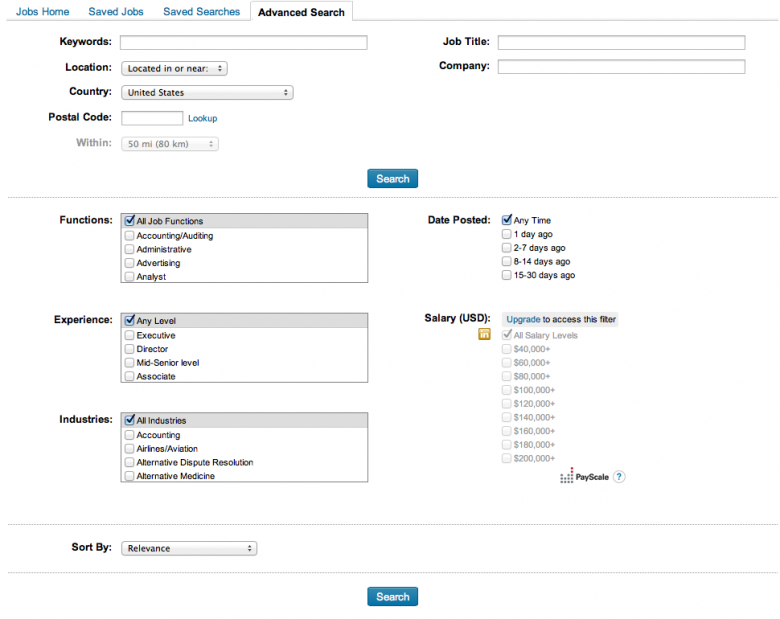LinkedIn and other professional networking sites encourage you to get noticed
I’ve already spent time explaining the importance of protecting yourself on social networks. We’ve been through ways to setup a safe and secure Facebook account as well as how to create a private Twitter profile. It can be a lot of work to manage and update your security settings with every change to Facebook’s policies, but there is at least one social network where privacy should be one of your last concerns. LinkedIn is the social media platform designed to allow professionals to connect and network to form and expand valuable business connections. It’s a place for recent college graduates and job seekers to share their resumes and experiences while looking for employment. Business owners and employers even take to LinkedIn to post open positions and scan for top talent in their particular field. On LinkedIn, the name of the game is standing out, getting noticed, and showcasing your talents and accomplishments (LinkedIn profiles are little more than extensive, interactive resumés).
To better understand the differences between the major social networks, let me compare them to different social gatherings that (used to) occur in real life, among humans in the same space.
Facebook, the biggest and most popular social network, is like a house warming party: you invite your friends, family, acquaintances you just made in the neighborhood, and anyone you want to make jealous by showing off your awesome place and stuff.
Twitter is like when you get invited to a party thrown by a friend-of-a-friend: you only know a few people there, everyone else knows way more people than you, and you get to try your best to be cool and funny around a new group of hip people whom you want to impress.
Google+ is the family or high school reunion you dread attending, but whose invitations you can’t ignore: the few people who use it seem like self-absorbed over-achievers, and enjoying yourself makes you uncool.
Pinterest is like a baby shower, wedding shower, tupperware party, craft night, and support group all rolled into one: people tell each other all the things they want and ideas they have, share pictures and directions for craft projects, and tell everyone how great they are.
LinkedIn would then be the career fair or open interview: everyone is in their nicest classy attire, showing off their degrees and certifications, and if you impress the right person, it might just change the rest of your life.
LinkedIn provides all the tools and paths to allow people to take control of their careers
This is what my “home page” or dashboard looks like when I log in to LinkedIn. The first thing you’ll notice are thumbnails and tiles featuring some of the most shared stories on my LinkedIn network. Essentially, LinkedIn curates a list of news stories and articles for you based on what your connections and groups (more on them soon) are sharing and what experts in your industries are reading at the moment. Some of the stories are those popular on all of LInkedIn in the past couple hours, and others come from “influencers”, or people like Richard Branson and Bill Gates and other such folk.
The upper-right gives you a search bar, where you can choose to search among LinkedIn’s people, groups, companies, jobs, or updates (posts). Below is an ever-changing box of people with whom the network thinks you may want to connect. These people often share come connections (friends, contacts, etc) or groups with you, or maybe view some of the same profile you view–which brings me to my next point.
As I said before, the whole point of LinkedIn is for you to get noticed, and that’s why the site makes sure you know just how much exposure you’re getting. In the bottom left corner of the shot, you can see a breakdown of profile views and search results. As you can see, only 7 people have been to my page in the past two weeks, and I’ve shown up in searches 20 times, such as when someone enters Patrick or McMulen into the search field. LinkedIn is free to join and maintain, for a basic profile (like I have). However, my employers pay yearly for a LinkedIn premium account, which allows them to see detailed lists of exactly who viewed their profile, for how long, how many times, and which parts of the profile they read the most. This is a business tool after-all and it can be extremely valuable to know when a potential client or partner views your professional information.
On LinkedIn, groups actually mean something
Across the top, there are different page buttons like “home” and “jobs” etc. Being able to view your profile, or a list of your contacts, is necessary and ubiquitous on every social media site, but LInkedIn boast some features you won’t find elsewhere. Sure Facebook has groups and pages, Google+ has circles, and Twitter has lists, but none are as practical or meaningful as the groups on LinkedIn. Since the whole site and service are designed around networking and establishing business connections, LinkedIn groups also aim at fostering professional communications and discourse. Some groups are open to the public, meaning anyone can join, comment, and read the contents of the page. Some groups–often the best ones–are private and require an approval process to gain membership. For example, I’m a member of a group called Social Media Research, Analysis, and Insight. One can apply to be a member of the group, but they won’t gain admittance unless they are a social media research professional. I’m in another group for DePauw University alumni. Don’t bother applying unless the University has you on record. The point is, some groups are better-off as exclusive. LinkedIn groups are places to ask questions, post industry news, and share job openings. Why would DePauw University Alumni want to sare job posting with non-DePauw alumns? LinkedIn provides a place for you to maintain connections you have in real life, ones that may lead to jobs one day, while also forming new connections with those with whom you share interest or expertise.
Perhaps the biggest difference between LinkedIn and any other social networking site is that the former also provides a rich platform for posting, searching, and applying for jobs. I didn’t create my LinkedIn profile until I was happily working for Fizziology, and I have no intentions of looking for a job for years to come, but the LInkedIn jobs search has allowed me to really help out some of my friends who were seeking employment.
This is the advanced tab within the LinkedIn job search. You can find jobs organized by industry, location, required experience level, company, and even by salary (if you have a job-seeker account). LinkedIn is quickly becoming the premiere jobs hosting board in the US, as sites like Monster and Career Builder are increasingly flooded with spam, and other options like Craigslist leaving employers with stacks of under-qualified applicants. LinkedIn allows job posters to be very specific about who they intend to hire, and gives them the opportunity to scan the potential employee’s resume-cum-profile. More and more of the best jobs are being posted on LinkedIn as more and more employers realize the value of talking to top talent. With high quality jobs comes top caliber talent, so finalizing an impressive profile and amassing some connections should come before applying for jobs.
You should go create a LinkedIn profile now
If you don’t have one already, it’s time to setup a LinkedIn profile. Even if you are secure in a career you love, creating and maintaining a LinkedIn profile can only serve to drive awareness to your brand and company and get you noticed for your accomplishments. Just this month, LinkedIn itself passed a milestone of 200 Million users, and the site is growing at an alarming rate (especially around December and May when colleges hand out diplomas). Big things are happening, big connections are being made, and big ideas are being shared on LinkedIn; you should see what the site can do for your career.
As always, feel free to contact me with any questions you have about creating a profile and using LinkedIn, or any other social networking service.



